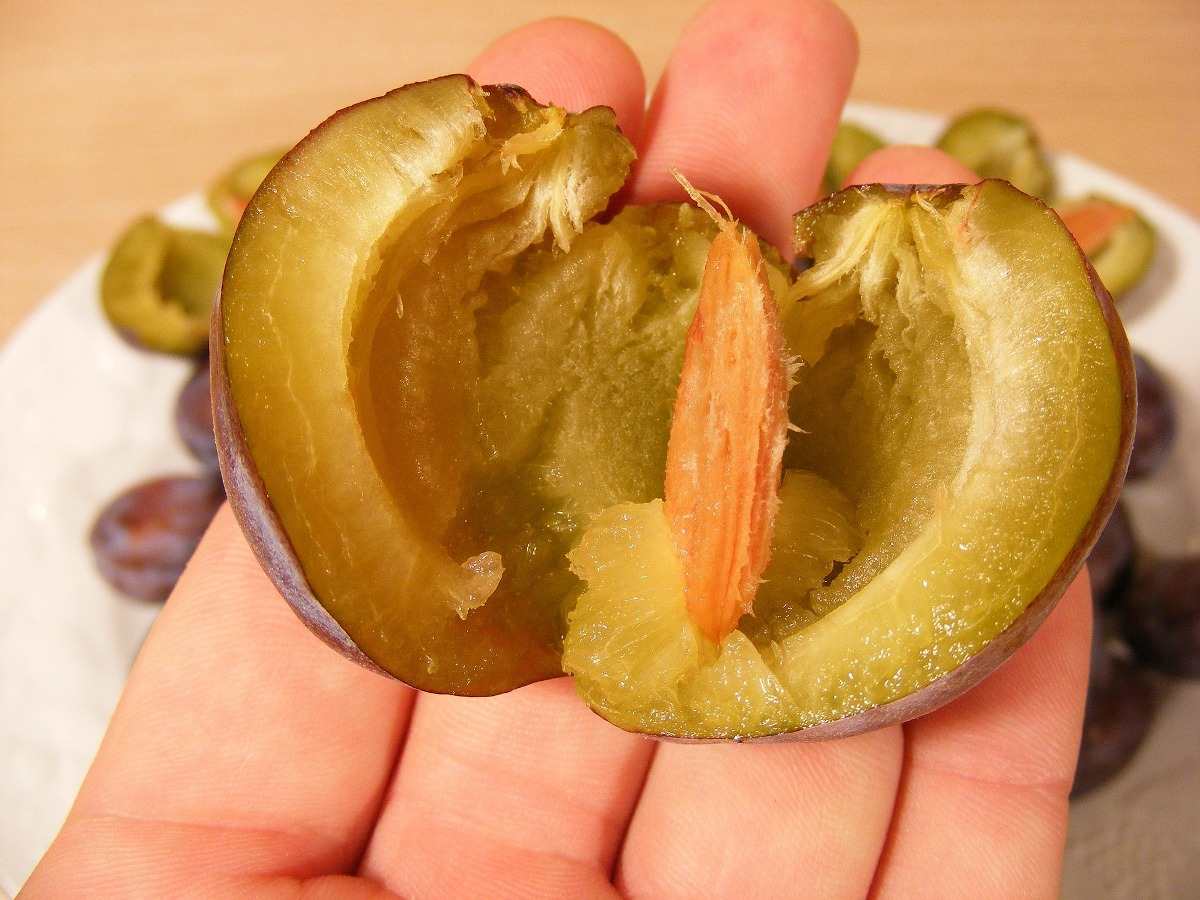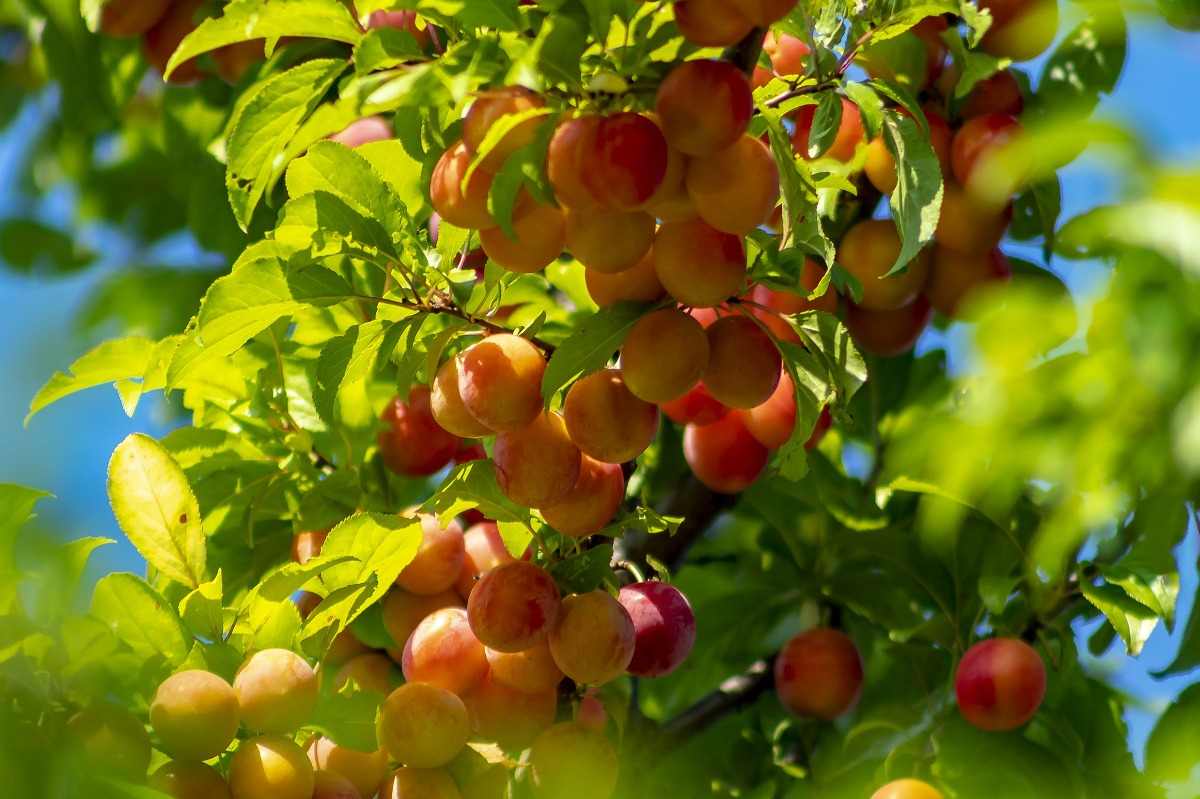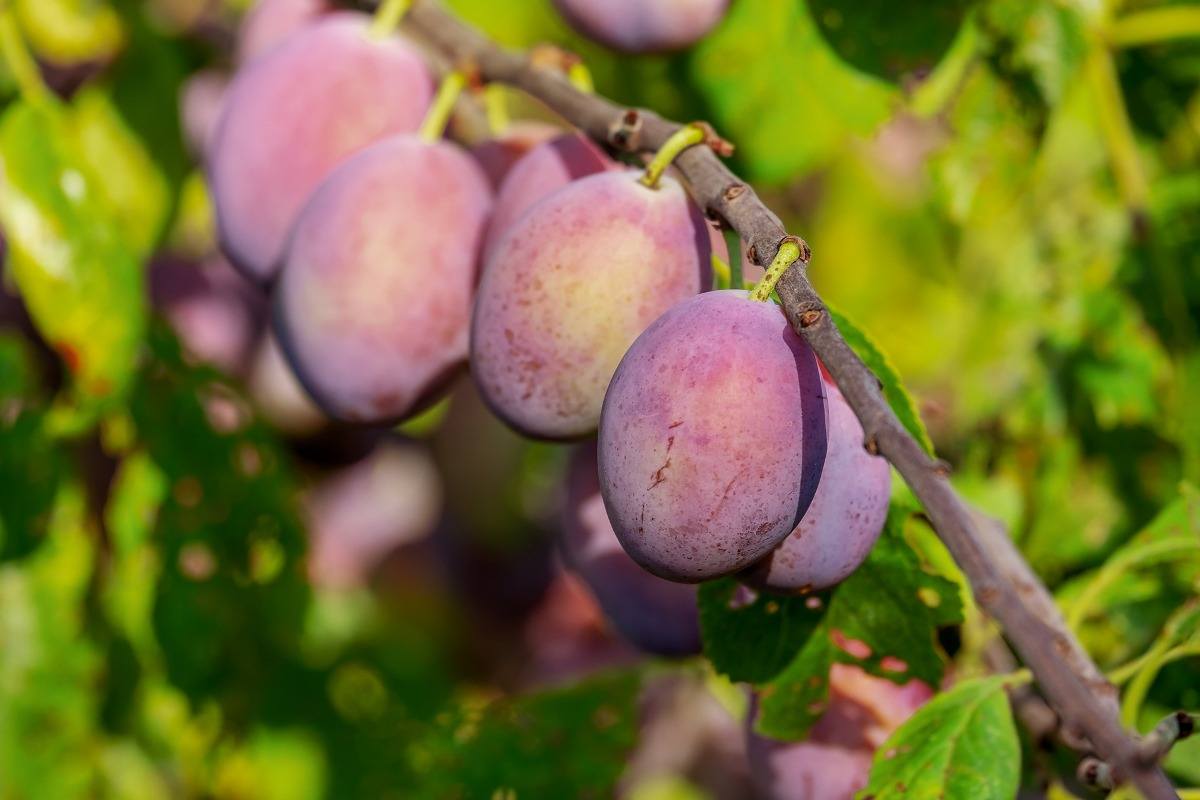Introduction to plum seed germination
The Plum is a drupe fruit this belongs to the subgenus Prunus (Family Rosaceae). Plums grow and hybridize easily, making this group of fruit trees extremely diverse and well-adapted to a different variety of soils and climatic conditions. A Plum fruit popularly called as “Aloobukara” in India. The commercially farming Plum trees are medium in size. Without pruning, the Plum trees can reach up to about 12 meters height can spread across 10 meters. Plums are closely related to peaches and cherries and widely eaten fresh as a dessert fruit, cooked as compote or jam, or baked in a variety of pastries. Trees of some Plum species reach a height from 6 to 10 meters (20 to 33 feet), as others are much smaller; some species are small shrubs with drooping branches. The flower buds on varieties are borne on short spurs or along with the terminal shoots of the main branches. Plumtree varieties that can be dried without resulting in fermentation are called prunes. Such Plums have firm flesh and have high levels of sugar, qualities that favor their being preserved by drying, which is done in dehydrators or in the sun. In this article we also discussed below topics;
- How do you germinate Plum
- Plum seed germination temperature
- How long does Plum take to germinate
- Process for germinating Plum seeds
- Plum seed germination period
A step by step guide to Plum seed germination procedure

Plums need full sun and well-drained, sandy soil in order to thrive. They prefer soil with a pH level that ranges from 5.5 to 6.5. It is always a good idea to have your soil tested before planting any fruit tree to be sure that the pH is appropriate. You should work the appropriate amendments into your soil before planting. Plums have a high content of Vitamin C and they are known to be good antioxidants. Plums are rich in Vitamin A, Vitamin B, riboflavin, and some other minerals like iron, phosphorus, and calcium. Consumption of Plums helps in the production and absorption of iron in the body, so leading to better blood circulation in the body.
Commercial varieties of Plums in India
Most of the commercial Plum varieties are grown in India belong to the Salicina group. Their fruits have the best taste and suitable as fresh fruit while others for processing.
There are two types of Plum varieties, the European, which contains less water and more soluble solids, suitable to be dried, and the Japanese, juicier for fresh consumption.
The European Plum (Prunus domestica) variety is generally born pale green or purple fruits, to which dry Plums belong, as they have a high content of soluble solids and contain little water; this makes dehydration much easier. The most used Plum varieties for their industrial processing belong to the group Ente, like Agen of Ente GF 707. For instance, in Alicante and Castellon, the most cultivated Plum varieties are Stanley, Claudias, Ana Spath, President, and Giant. Generally, this group is well adapted to regions with continental climate due to their flowering, greater demand for cold, and less demanding in cares.
The Japanese Plum (Prunus salicina), with earlier maturation and, in general, reddish and black epidermis, while some can be pale yellow, like “Golden Japan”. Its water content is high, so it is juicy. For instance, in the Rivera Alta of the Comunidad Valenciana (Spain), we find the Plumvarieties Red Beauty, Methley, Golden Japan, Formosa, Santa Rosa, and Burbank. They are cultivated in the warmest areas due to their flowering period, while in some cold areas we can see almond trees grafted with the variety Red Beauty, important for its pink-dark color and its earliness.
Availability of Plum fruit plants in India
Plums are a rare fruit in India, in part because Plums conflict with conditions necessary for apples. The primary producers of Plum are Punjab, Uttar Pradesh, Himachal Pradesh, and Jammu and Kashmir. Though India is not known for its temperate Plum fruit production, the country grows approximately 12 varieties from the Prunus salicina species. Plum fruit season ranges from late April through June.
In case if you miss this: Black Gram Seed Germination Procedure.

The Plumtree grows in a wide range of soils. Though, coarse sandy soils that dry out fast during hot summer and heavy clay soils that are waterlogged for long periods should not be selected. Sandy loam soils that are deep in nature with good water drainage must be ideal for Plum trees thrive well in neutral soil, with a pH level range of 5.0 to 6.5.
The germination of Plum seed
Plant several Plum seeds at the same time because some seeds may not sprout. First, clean the seeds in fresh water and scrub away any pulp. Pits from stone fruit, including Plums, need a cold period before they will sprout, called cold stratification, a procedure which allows the seed to wake-up and breaks dormancy.
There are mainly two ways to cold stratify Plum seeds;
- Place the seeds in moist paper towels in a plastic bag in the refrigerator at a temperature range of 1 to 5ºC for 8 to 12 weeks.
- Plant the seeds about 3 inches deep directly in the soil outside when average outdoor temperatures are at or below 5ºC.
Plum stones from the ripe fruits are mainly extracted during May. These stones are washed to remove pulp and stored after room drying in gunny bags in shade. The seeds are sown in lines in the nursery during November and the seeds are covered with a 4-5cm thick layer of sand.
This will be sufficient to stratify the seed in the field and the seed will start germinating. Alternately the Plum seeds can be stratified in wooden boxes as in peach and kainth seeds. The stratification process is complete when the Plum emerges out from the stones of the upper layer of stones in the box.
The emerging seedlings from the stones are collected and then sown in lines 30cm apart at a distance of 10cm. Leave a gap of 45cm after transplanting four rows and thereafter light irrigation through flooding should be given. Then, these seedlings get ready for grafting within a year.
The seed rate of Plum
The Plum seed rate is approximately 110 tree/acre.
Plum plant spacing
One-year-old budded plants may be planted during June – July or October – December with a spacing of about 4 x 4 m in pits of 60 cm x 60 cm x 60 cm size.
Prepare a large hole by breaking up the soil and then adding plenty of well-rotted organic matter. Mulch after planting, and encircle the trunk with a wire cage to protect the young Plum tree from animal and insect pests. Then, young Plum trees are at high risk for damage from insects that bore into the main trunk.
Stratifying Plum seed in the refrigerator for germination
Check on Plum seeds in the refrigerator every week, and keep the paper towels moist. When you see a root emerging from one end of the pit, gently remove it from the paper towels and plant it about 2 inches (5cm) deep in a container filled with potting soil.
Place the container where it receives plenty of suns and maintains it well watered and out of freezing conditions until the seed sprouts. Once the sapling has reached a height of 2 feet (.6 meters), plant it into the garden in a permanent location with full sun and fertile, well-draining soil.
You should not miss this: Papaya Pests and Diseases, Control Management.
Process of Plum seed germination
Plum seeds have a double dormancy that requires mainly two steps to break, a period of warm stratification followed by cold stratification process. It may take up to two years for Plum pit to grow into a small sapling, so patience is a big requirement for success.
Several factors are very important concerning the germination of Plum seeds, and one of the most critical ones is the control of humidity. In the reported experiments, a certain loss of seed germination capacity was found after the drying of seeds followed by the water-saturation of embryos and stratification. A different stratification media illustrated that a mixture of sand and Perlite (ratio 1:1) gave the highest germination percent, while the organic medium “Moder jord” gave the poorest germination. A 4-week period of about 20°C preceding 3 months stratification gave higher germination than no such warm period. Cracking stones followed by removal of the seed coat and then sowing of embryos directly after harvest gave the highest percentage of germination. This process, however, gave a high loss of seedlings due to dormancy and poor seedling growth. The highest germination of stones when seeds were kept in plastic containers during stratification compared to plastic bags. The percentage of seed germination ranged from 0 to 85% in the experiments, and clearly demonstrates the importance of a defined protocol.
Process of seed germination will be;
- Remove the Plum seed from the Plum and scrub it under warm running water to wash away the flesh of the fruit. Any leftover flesh can potentially lead to rot.
- Plant the Plum seed between 2 and 4 inches deep in a sunny location. Then, cover the seed with soil and tamp it down lightly. It is best to plant in late fall, just before the ground freezes.
- Leave the seed in the ground throughout the winter months and the seed should crack open during this stratification period, which in turn makes it more likely to germinate.
- Maintain the soil moist, but not soggy once spring comes around. As long as the seed gets moisture and exposure to the sun, it must germinate by the middle of summer.
- The seed should be cold stratified at a temperature between 1 and 5ºC for a minimum of 90 days. Store the Plum seed in the refrigerator if you live in an area that doesn’t get temperature range this low. Plant the Plum seed in the ground after the stratification period.
- Plant multiple seeds to increase the chance of successful seed germination. Keep the soil slightly moist during the seed germination period.
Plum plant pits
When you are planting fresh Plum seeds or pits, first remove the seed and wash in lukewarm water with a soft scrub brush to remove any pulp. The Plum seed needs a chilling off period at temperatures of between 1-5ºC before it will germinate, about 10-12 weeks. This is called the stratification procedure and there are two methods to accomplish it. The first process is to wrap the pit in a moist paper towel inside a plastic bag and then place it in the refrigerator. Leave it there for 6 to 8 weeks, keeping an eye on it in case it sprouts earlier.
Conversely, natural germination is a method of stratification wherein the Plum pit goes directly in the ground during the fall or winter. It’s a good idea to add some organic matter, but no fertilizer, into the hole, about a month before planting the pit or seed. When planting the fresh Plum seeds, they must be 3 inches (8 cm.) deep in the soil. Mark where you have planted the pit then you can find it in the spring.
Leave the Plum pit outside through the winter months and watch for any sprouting; then, keep the new plant moist and watch it grow. If you have cold stratified the seed in the refrigerator, once the seed has sprouted, remove it and plant the Plum pit in a container with well-draining soil composed of one part vermiculite and one part potting soil, about 2 inches (5 cm.) deep. Situate the pot in a cool, bright area and maintain moist but not too wet. After all danger of frost has passed, select a new location in the garden for a new Plum tree with at least 6 hours of direct sunlight. Prepare the soil by digging a hole about 12 inches (31 cm.) deep, removing any rock or debris. Mix compost into the soil and plant the new Plum from a pit to its original depth and tamp the soil around the plant. Water and keep soil evenly moist. Otherwise, you should mulch or compost around the base of the seedling to retain moisture and fertilize with tree spikes or about 10-10-10 fertilizer in the early spring and then again in August. When planting Plums from seed, have some patience. It will take a few years before the Plum tree bears fruit, which may or may not be edible.
Harvesting process of Plum

The Plum fruits are mature when these have attained a proper size and developed proper color mainly depending upon the cultivar. The fruits are harvested from the second week of May in Punjab. For local marketing, fruits must be harvested when ripe and firm. For distant markets, fruits are picked when firm but have developed about 50% color on the skin. Plum must be harvested along with pedicels avoiding any injury to the fruit.
As Plum very perishable, it must be packed with good care. The optimum maturity standard varies with a variety of fruit and intended use of Plum fruit. If you are planning for local consumption, Plum must be allowed to ripen on the tree itself. Since all Plum fruits do not ripen at the same time there must be harvested in several pickings.
The yield of Plums
It all depends on a variety of fruit cultivated and farm management, on average crop yield can be expected up to 40 kg/tree.
In case if you miss this: Dragon Fruit Seed Germination, Time Period, Process.